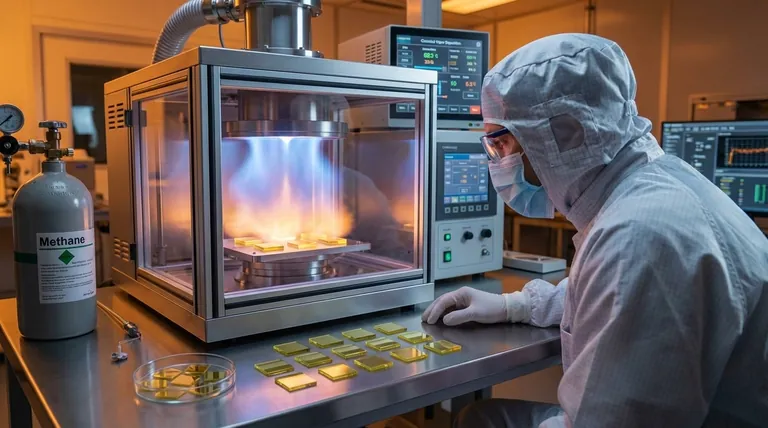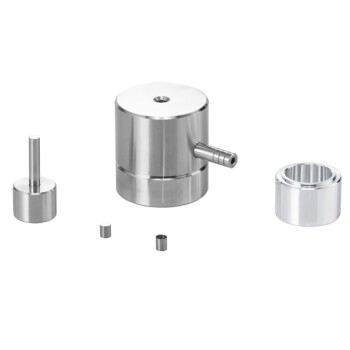The primary trend in synthetic diamonds is exponential growth. Driven by rapid advancements in production technology, lab-grown diamond output is on a trajectory to match natural diamond production by 2035, fundamentally reshaping the economics and consumer perception of the entire gemstone market.
The core trend is not simply more synthetic diamonds, but their rapid commoditization. As manufacturing efficiency improves and new competitors enter the market, the price gap between lab-grown and natural diamonds is widening, shifting synthetics from a direct competitor to a distinct, technology-driven product category.

The Core Drivers of the Synthetic Diamond Surge
The growth of the synthetic diamond market is not a single-factor event. It is a confluence of maturing technology, scaling production, and increasing market acceptance that is creating a powerful, self-reinforcing cycle.
Skyrocketing Production Capacity
The most telling indicator of the trend is the forecast for production volume. Analysts predict that by 2035, the annual output of synthetic diamonds will equal that of natural diamonds, a staggering increase that signals a permanent market shift.
A Maturing Market
In 2021, the global synthetic diamond market was valued at approximately $14 billion and expanding at an 8% growth rate. While still smaller than the $65-80 billion natural diamond jewelry market, its rapid expansion is capturing significant consumer attention and investment.
The Technology Behind the Growth
This expansion is made possible by two primary manufacturing methods. Each has its own process, but both reliably produce high-quality, gem-grade diamonds.
- High Pressure/High Temperature (HPHT): This is the traditional method, which mimics the natural diamond-forming process by subjecting carbon to immense pressure and heat.
- Chemical Vapor Deposition (CVD): This modern technique involves "growing" a diamond atom by atom from a carbon-rich gas (like methane) in a vacuum chamber. In 2021, CVD accounted for approximately 60% of the market.
Understanding the Economic Impact
The technological trend has profound and predictable economic consequences. As with any manufactured good, efficiency gains directly impact price, value perception, and accessibility.
A Widening Price Gap
The price difference between natural and synthetic diamonds is not static; it is actively widening. Continuous improvements in the HPHT and CVD processes mean the cost to produce a lab-grown diamond consistently falls.
The Path to Commoditization
This downward price pressure is a classic sign of commoditization. As production becomes more efficient and new suppliers enter the market, synthetic diamonds behave less like a rare, natural resource and more like a high-tech manufactured good, where price and specifications are the key differentiators.
Full-Spectrum Availability
Modern production methods can create a wide variety of diamond types and colors. This includes near-colorless (Type IIa), blue (Type IIb), and yellow-to-orange (Type Ib) diamonds, offering consumers the full range of aesthetic choice without the rarity constraints of natural gems.
Common Pitfalls to Avoid
Navigating this evolving market requires understanding the trade-offs and avoiding common misconceptions. The rapid changes can easily mislead those who rely on outdated information.
Mistaking "Identical" for "Equivalent"
While synthetic diamonds are chemically and physically identical to natural diamonds, they are not economically equivalent. Their manufacturing origin means their supply is theoretically unlimited, which fundamentally separates their long-term value proposition from that of finite, mined diamonds.
Ignoring the Resale Value Gap
Due to the ongoing price declines from mass production, the resale value of synthetic diamonds is significantly lower and less predictable than that of high-quality natural diamonds. They should be purchased for their aesthetic and immediate value, not as a long-term financial store of value.
Assuming All Synthetics Are Equal
Just like with natural diamonds, quality can vary significantly. The skill of the producer, the precision of the method (CVD vs. HPHT), and post-growth treatments all impact the final gem's clarity, color, and brilliance. A lower price can sometimes indicate lower quality.
Making the Right Choice for Your Goal
Your approach to the diamond market should be guided by your specific objective. The rise of synthetics has created distinct pathways for different priorities.
- If your primary focus is maximizing carat size and aesthetic appeal for a set budget: Lab-grown diamonds offer unparalleled value and are the logical choice.
- If your primary focus is long-term value retention and the allure of natural rarity: Mined diamonds remain in a separate category, as their finite supply insulates them from the production-driven price declines seen in synthetics.
- If your primary focus is market analysis or technological investment: The key trends to monitor are the increasing efficiencies of CVD production and the ongoing commoditization of the lab-grown sector.
Understanding these fundamental market dynamics empowers you to make a decision based on clear realities rather than outdated perceptions.
Summary Table:
| Key Trend | Impact |
|---|---|
| Production to match natural diamonds by 2035 | Market share and consumer perception shift |
| Market valued at $14B, growing at 8% (2021) | Rapid expansion capturing investment |
| Dominance of CVD method (60% of market) | Technological efficiency driving costs down |
| Widening price gap vs. natural diamonds | Accelerating commoditization and accessibility |
Navigate the evolving diamond market with confidence. The surge in synthetic diamond production presents both opportunities and challenges. At KINTEK, we specialize in the advanced laboratory equipment and consumables that power this innovation, from CVD and HPHT systems to precision tools for quality analysis. Whether you're a manufacturer, researcher, or investor, our expertise ensures you stay ahead of technological and market trends. Contact us today to discuss how our solutions can support your goals in the dynamic world of lab-grown diamonds. Reach out via our Contact Form to get started!
Visual Guide

Related Products
- CVD Diamond for Thermal Management Applications
- Customizable High Pressure Reactors for Advanced Scientific and Industrial Applications
- Cylindrical Press Mold with Scale for Lab
- Cylindrical Resonator MPCVD Machine System Reactor for Microwave Plasma Chemical Vapor Deposition and Lab Diamond Growth
- High Pressure Laboratory Autoclave Reactor for Hydrothermal Synthesis
People Also Ask
- What are the disadvantages of CVD diamonds? Understanding the trade-offs for your purchase.
- Are CVD diamonds better than HPHT? The Real Truth About Lab-Grown Diamond Quality
- What substance is used to make lab-grown diamonds? Pure Carbon, Identical to Natural Diamonds
- What is the main difference between CVD and natural diamond? Origin, Purity, and Value Explained
- Is lab-grown diamond legal? Yes, and here's why they're a legitimate choice



















